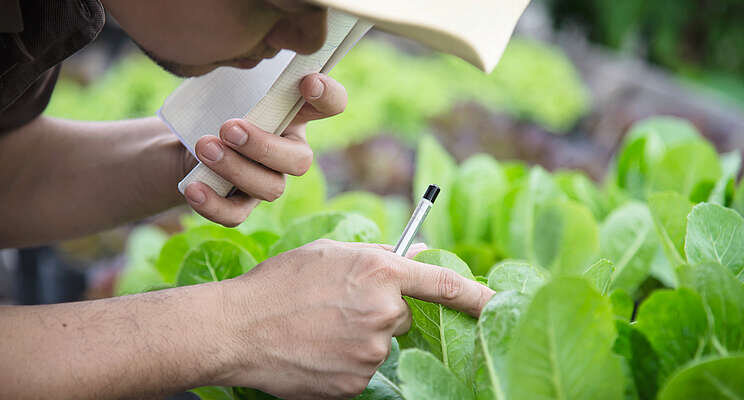A sustainable alternative to disposing media
Added on 13 April 2022

Funded in part through the Greenhouse Competitiveness and Innovation Initiative (GCII) administered by the Agricultural Adaptation Council (AAC), the research also involves testing Walker's composting process to determine whether it can successfully inactivate certain viruses like the tomato brown rugose fruit virus (ToBRFV), a highly destructive plant pathogen that can cause severe production losses in affected crops and has spread to all the major greenhouse tomato growing regions of the world.
Stonewool (rockwool) is one of the main substrates used by greenhouse vegetable growers in Canada to grow their crops. A mineral-based product spun into wool and enclosed in plastic, it provides structure for the roots of plants grown hydroponically (without soil).
Once used, most stonewool slabs currently end up in landfill, as do traditionally compostable materials like pepper and tomato vines to prevent the spread of ToBRFV.
"The goal is to eliminate the disposal of the spent growing media slabs and instead turn that waste into usable products," says Geoff Boyd, Vice President of Resource Recovery at Walker. "At the same time, we want to make sure that we can compost this material properly and effectively destroy any plant viruses, so we don't inadvertently spread them around."
The research team is conducting trials to separate the plastic that surrounds the stonewool slabs and process the remaining material into a clean and usable product that is free of plastic contamination. The processed stonewool is then composted in Walker's static aerated composting system. Prior to placement in the compost row, the infected material is secured in a specifically formulated vessel that allows the heat and air to pass through but prevents the stonewool from coming into contact with the other material in the compost row.
After the compost process is completed, a bioassay is used to determine if composting was effective in deactivating the virus. Samples of tomato tissue from the bioassay are sent to a testing lab to detect for the presence or absence of the virus.
Continue reading.
Photo created by jcomp - www.freepik.com
Source: Greenhouse Grower
More news















